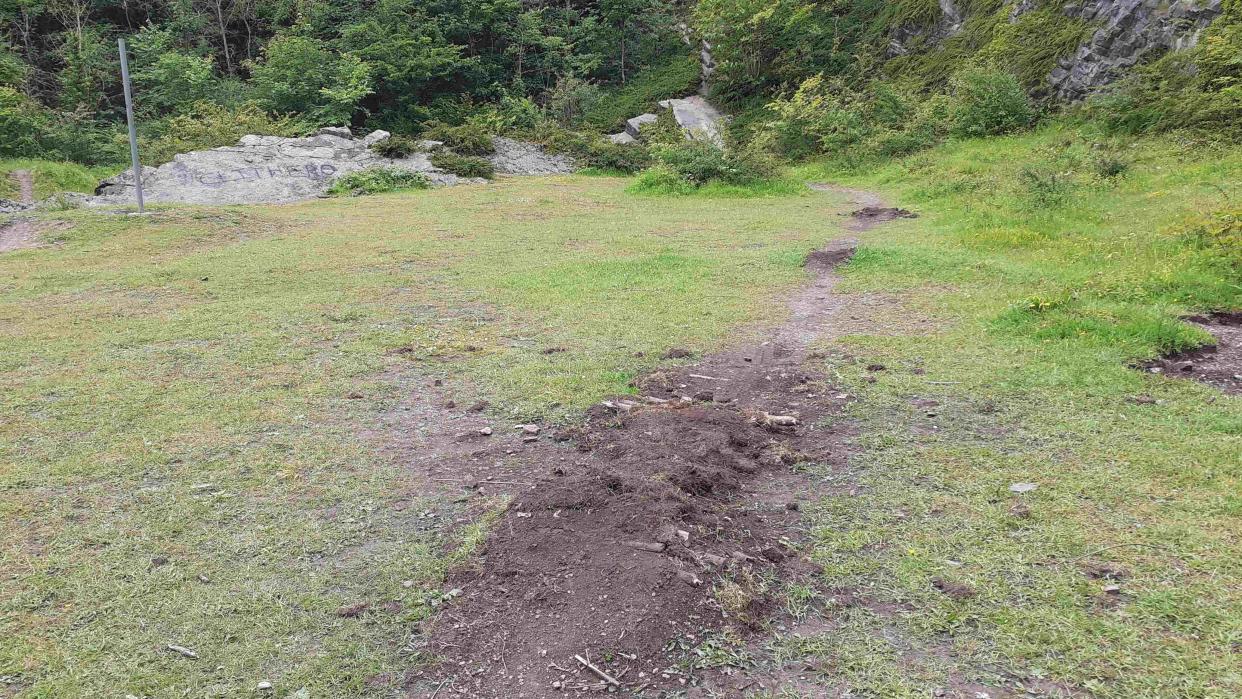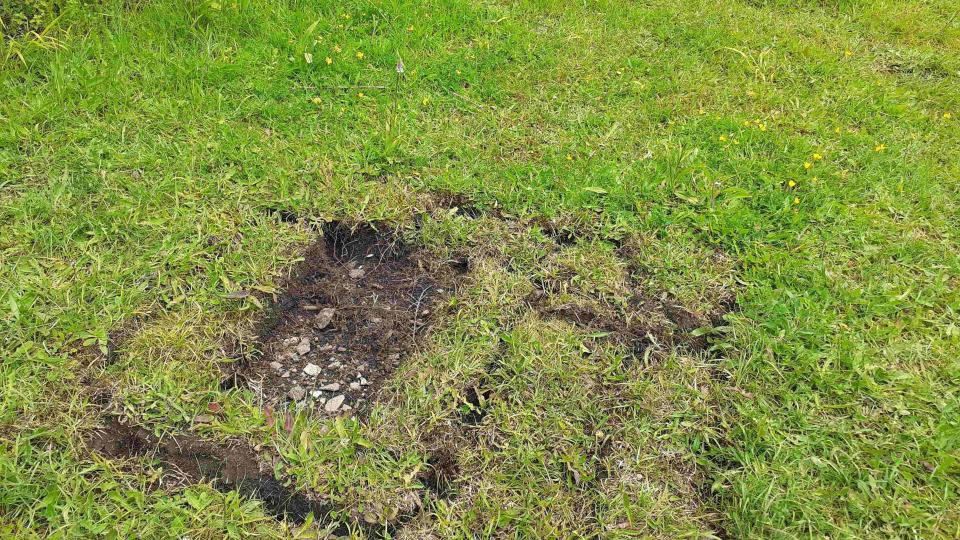Anger as cycle stunts damage nature reserve

Conservationists have hit out at cyclists for damaging a Lancashire nature reserve by scraping up patches of soil to create makeshift jump ramps.
A section of "precious" wildflower meadow at Cross Hill Quarry in Clitheroe has been badly damaged by the "unlawful" creation of the jumps, the Wildlife Trust has said.
Kim Coverdale, East Lancashire reserves officer for the trust, said it was unlawful to uproot any wild plants without permission.
She has appealed for people "to love and care for our nature reserves".

Ms Coverdale said the quarry floor at the reserve was one of the most important areas on the site for wildflowers such as bee orchids and common spotted orchids,
"In fact, just next to the damaged area an orchid was in flower, and countless other important species associated with these limestone grasslands may have been lost," she said.
She added that while the trust very much wanted people to be able to visit and enjoy the nature reserve, they urged them to do so responsibly.
"The Wildlife Trust and our amazing volunteers work really hard to look after this wonderful place, so to see this damage is really disappointing,” Ms Coverdale continued.
“While making a few small jumps may seem harmless it can actually have a really significant effect on species right across the nature reserve, on top of damaging this precious wildflower meadow."

Ms Coverdale said that nationwide there had been a 97% decrease in wildflower meadows since the 1930s so it was important to "treasure and protect these beautiful habitats and protect the diversity".
The reserve's flowers and orchids support a range of pollinators such as hoverflies and bees, with the reserve home to a rich insect population.
Wildlife on the site includes birds such as nuthatches, blackcaps, willow warblers, blue tits and great tits, along with kestrels and bats.


